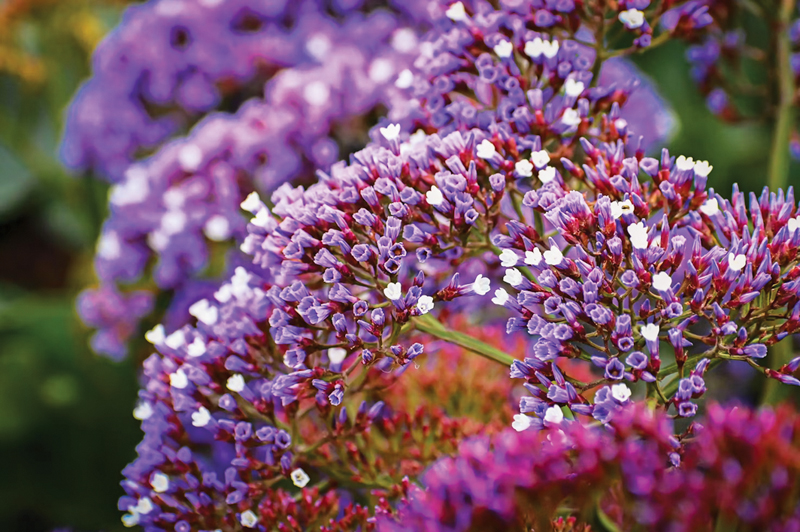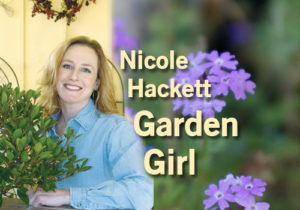Bee sure to grow lavender, and your garden will buzz with joy

 CLAYTON, CA (August 22, 2024) — Bees have been very busy throughout the nursery these past couple of weeks. All the heat has some of their favorite plants producing masses of flowers, and the bees are working harder than ever. If you’re one of the many interested in attracting pollinators to your garden, this is the column for you.
CLAYTON, CA (August 22, 2024) — Bees have been very busy throughout the nursery these past couple of weeks. All the heat has some of their favorite plants producing masses of flowers, and the bees are working harder than ever. If you’re one of the many interested in attracting pollinators to your garden, this is the column for you.
Sea Lavender is the common name for Limonium Perezii. This short-lived evergreen perennial has graced many Clayton Valley full sun landscapes through the decades. Sea Lavender has lettuce-like dark green foliage.
Beginning in April, the Sea Lavender’s thin dark green stems struggle to hold up the robust cluster of purple flowers with white tips, which arch and bend. The flower stems stretch 2-feet above the evergreen foliage and dries in place as the flower fades.
Once the blooming begins, it seems that Sea Lavender will continuously flower. Sea Lavenders are short-lived plants, usually lasting about 5-7 years after installation. Fortunately, Sea Lavender plants are readily available, and reasonable to buy. Considering all the flowers each plant produces, most decide to replant this beauty.
Hot colors
Gaillardia is a group of perennials with daisy-shaped flowers, available in many hot colors and grows as a rounded mound – often found in reds, oranges, bicolor of both, golds and yellow.
The intriguing characteristic of Gaillardia is the center of the petals. As the flower fades, and the petals fall, Gaillardia leaves behind a familiar globe of color where petals once encircled. Once the globe browns, you prune back to the growth of leaves and more flowers appear.
Gaillardia is long-blooming, flowering through even the hottest summers. The bees find this shape irresistible, and the pollen is so easy to collect, it is always a favorite.
Agastache Purple Haze is an excellent perennial that stands tall and proud in a flower bed. Clusters of blue-violet flower appear in late spring and with deadheading lasting far into the fall. This perennial does appreciate good drainage, so we advise gardeners to leave ½-inch of the root ball above the soil grade when installing.
Agastache plants usually boast their attraction to hummingbirds, but Purple Haze is that one family member that does its own thing, and the bees love it.
Bee magnet
Teucrium cossonii is a bee-magnet as far as groundcovers go. Small bunches of purple flowers cover this evergreen’s gray foliage. Native to Australia, it does exceptionally great in our hottest sun areas.
Nepeta is a fabulous family of perennials that are herbaceous and live for decades. In the ground, many confuse them for lavender, or salvia, but no … they are nepeta, and they are wonderful.
Gray foliage, periwinkle-colored flowers and an exceptionally long blooming season. This perennial is one of the first in the spring and bees love the early pollen it provides. There are many nepeta to look out for, Nepeta Six Hills Giant and Nepeta Walkers Low, both would make your garden and bees happy.
Salvia and lavender are both incredibly desirable plants for bees. Salvia Mystic Spires and Maynight both are bee’s favorites, as well as Hot Lips and any of the other greggii varieties.
All the lavender is attractive to bees. The earliest blooming lavender are the otto quast selections, the most maintainable are the dwarf varieties, Provance is the most sought after and Goodwin Creek grows like the largest shrub.
Contact Nicole Hackett with questions or comments by email at gardengirl94517@yahoo.com.
Read more “Garden Girl” columns.

Nicole Hackett
Nicole is the Garden Girl at R&M Pool, Patio, Gifts and Garden. You can contact her with questions or comments by email at gardengirl94517@yahoo.com
